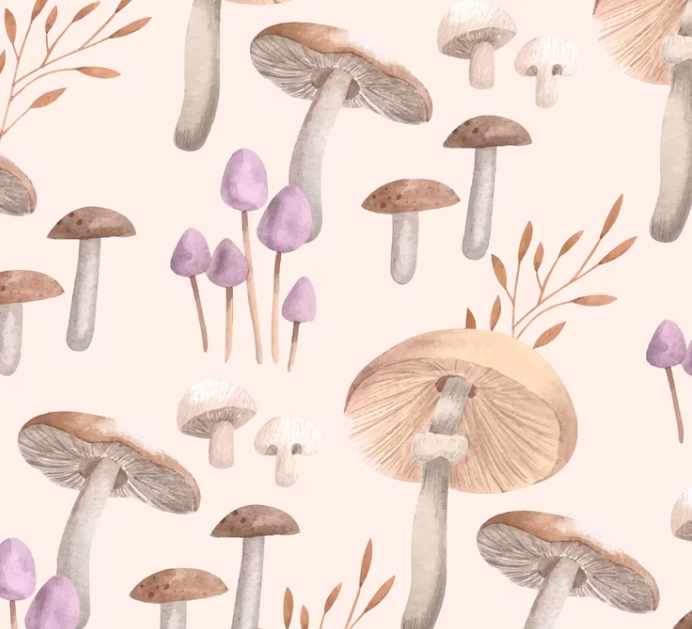
How to Grow Edible Mushrooms Indoors
If you’re a mushroom lover and want to enjoy the taste and freshness of homegrown edible mushrooms, you’ll be thrilled to know that you can cultivate them right in the comfort of your own home. Growing edible mushrooms indoors is a rewarding and fascinating process that allows you to harvest your own flavorful fungi. In this article, we will guide you through the steps to successfully grow edible mushrooms indoors.
Table of Contents
- Introduction
- Choosing the Right Mushroom Variety
- Preparing the Growing Medium
- Spawning and Inoculating
- Providing the Right Environment
- Maintaining Proper Moisture and Humidity
- Managing Light and Temperature
- Patience and Care
- Harvesting Your Mushrooms
- Troubleshooting Common Issues
- Frequently Asked Questions
- Conclusion
Introduction
Growing edible mushrooms indoors is a fantastic way to experience the joy of cultivating your own food. With the right knowledge and equipment, you can create a favorable environment for mushrooms to thrive and produce bountiful yields. Let’s dive into the step-by-step process of indoor mushroom cultivation.
Choosing the Right Mushroom Variety
Before you begin, decide on the type of mushrooms you want to grow. Some popular choices for indoor cultivation include oyster mushrooms, shiitake mushrooms, and white button mushrooms. Consider factors such as taste preferences, growth requirements, and availability of mushroom spawn (the equivalent of seeds for mushrooms). Research different varieties to find the best fit for your indoor setup.
Preparing the Growing Medium
Mushrooms require a specific growing medium to establish and grow. Common choices include straw, sawdust, or a mixture of the two. You can purchase pre-made mushroom-growing kits or prepare the substrate yourself. Sterilize the growing medium to eliminate any competing organisms that could hinder mushroom growth.
Spawning and Inoculating
Once your growing medium is prepared and cooled, it’s time to introduce mushroom spawn. Mushroom spawn consists of mycelium, the network of fungal threads that will eventually produce mushrooms. Mix the spawn thoroughly into the growing medium to ensure even distribution. Follow the instructions provided with the spawn or kit for specific guidelines on spawning and inoculating.
Providing the Right Environment
Creating the optimal environment is crucial for successful mushroom cultivation. Here are the key factors to consider:
- Light: Mushrooms do not require direct sunlight and prefer low light conditions. Indirect natural light or artificial lighting with low-intensity bulbs is sufficient.
- Airflow: Mushrooms need fresh air to grow, but excessive airflow can dry them out. Maintain a gentle and consistent airflow by using a small fan or opening windows slightly.
- Sanitation: Keep the growing area clean and free from contaminants. Regularly sanitize your hands, tools, and containers to prevent the introduction of harmful microorganisms.
Maintaining Proper Moisture and Humidity
Mushrooms thrive in high humidity environments. To maintain the necessary moisture levels:
- Misting: Regularly mist the growing medium with water to keep it moist. Use a clean spray bottle and distilled water to prevent contamination.
- Humidity dome: If growing in containers, consider using a humidity dome or cover to create a humid microclimate around the mushrooms.
- Humidifier: In drier environments, a humidifier can help maintain the required humidity levels. Monitor and adjust humidity levels based on the specific requirements of your chosen mushroom variety.
Managing Light and Temperature
Proper light and temperature conditions are essential for successful mushroom growth. Here are some guidelines to follow:
- Light: As mentioned earlier, mushrooms don’t require direct sunlight. Indirect natural light or low-intensity artificial lighting is sufficient. Aim for a light cycle of 12-16 hours of light and 8-12 hours of darkness per day.
- Temperature: Different mushroom varieties have specific temperature requirements. Generally, a temperature range of 60-75°F (15-24°C) is suitable for most edible mushrooms. Make sure to research and maintain the ideal temperature for the particular mushroom species you’re growing.
Patience and Care
Growing mushrooms indoors requires patience and careful attention. Here are a few important tips to keep in mind:
- Monitor and adjust: Regularly check the moisture levels, temperature, and humidity in your growing environment. Make adjustments as needed to ensure optimal conditions for mushroom growth.
- Avoid contamination: Maintain cleanliness and proper hygiene to prevent contamination. Keep your growing area free from pests, mold, and other potential contaminants.
- Be patient: Mushroom growth takes time. Depending on the variety, it can take anywhere from a few weeks to several months for mushrooms to fully develop. Resist the temptation to disturb or harvest them prematurely.
Harvesting Your Mushrooms
When your mushrooms reach maturity, it’s time to harvest and enjoy the fruits of your labor. Follow these steps for a successful harvest:
- Timing: Harvest your mushrooms when they have fully developed caps and just before the edges start to turn upward.
- Twist and pull: Gently twist and pull the mushroom caps to detach them from the growing medium. Be careful not to damage the surrounding mycelium.
- Clean and store: After harvesting, gently brush off any debris or substrate from the mushrooms. Store them in a cool, breathable container, such as a paper bag or container with air holes, in the refrigerator.
Troubleshooting Common Issues
Even with proper care, you may encounter some challenges along the way. Here are a few common issues and their solutions:
- Mold or bacterial growth: If you notice mold or bacterial growth, remove the affected mushrooms and adjust the growing conditions. Improve ventilation and reduce moisture levels to prevent further contamination.
- Slow or no growth: Insufficient or excessive moisture, incorrect temperature, or poor quality spawn can cause slow or no growth. Assess and adjust the growing conditions accordingly.
- Pest infestation: If pests such as mites or flies appear, consider using organic pest control methods or consult with a specialist for appropriate remedies.
Frequently Asked Questions
- Can I reuse the growing medium? Yes, some mushroom varieties allow for multiple flushes or harvests from the same growing medium. Follow specific guidelines for the mushroom variety you’re growing.
- How long does it take to grow mushrooms indoors? The time it takes for mushrooms to grow varies depending on the variety and growing conditions. It can range from a few weeks to several months.
- Can I grow mushrooms without a kit? Yes, you can prepare your own growing medium and obtain mushroom spawn to start the cultivation process from scratch. Kits are convenient for beginners or those who prefer a simpler setup.
Conclusion
Growing edible mushrooms indoors is an exciting and rewarding experience that allows you to enjoy the freshest, homegrown fungi. By following the steps outlined in this guide, you can successfully cultivate a variety of delicious mushrooms in the comfort of your own home. Remember to choose the right mushroom variety, provide the ideal environment, and practice patience and care throughout the process. Embrace the joy of growing your own edible mushrooms and savor the flavors of your homemade harvest. Happy growing!

